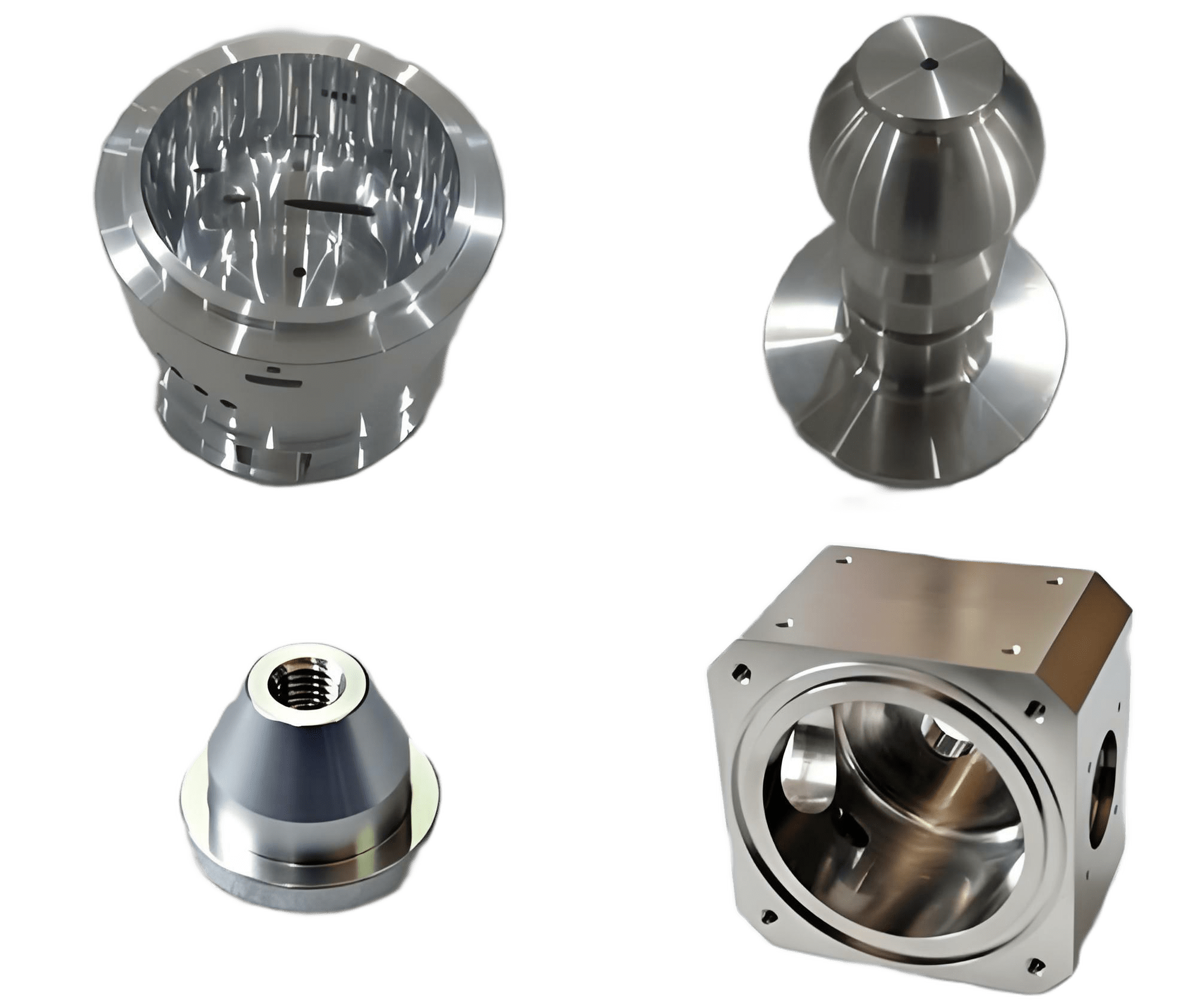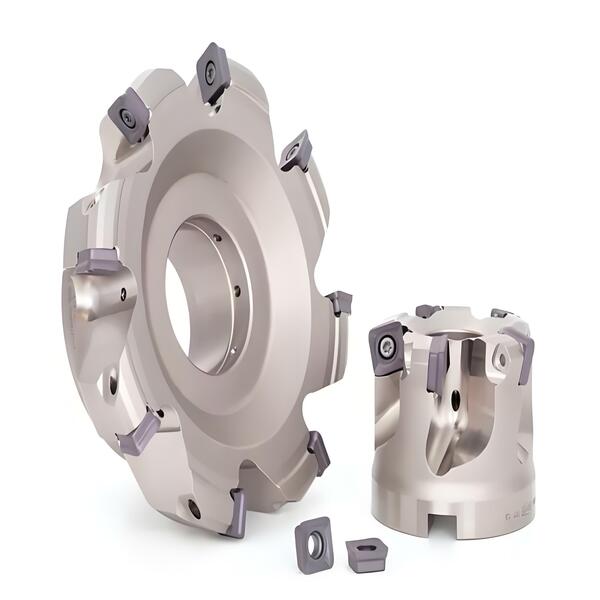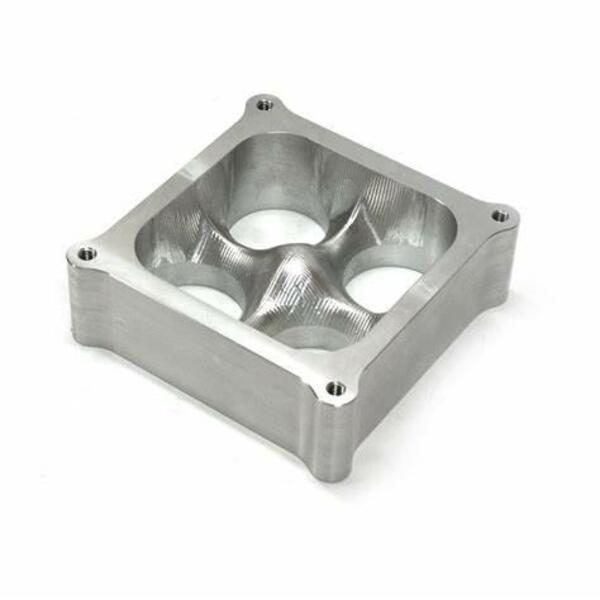
Guide to Machining Titanium
Titanium, known for its robustness and critical use in the aerospace and medical sectors, also poses significant challenges in machining due to its physical and chemical properties. This article aims to demystify these challenges and offers practical techniques to enhance the success rates in machining this formidable material.
Machining Methods In Titanium
1. Traditional Cutting
- Description: Standard cutting operations using lathes, milling machines, or drills.
- Tools: Carbide (e.g., titanium aluminum nitride, TiAlN) and ceramic tools are commonly used to resist high temperatures and reduce wear.
- Advantages: Suitable for most simple to medium complexity titanium alloy parts.
- Considerations: Requires lower cutting speeds and higher feed rates to prevent overheating of the workpiece and excessive tool wear.
2. High-Pressure Cooling
- Description: During cutting, coolants are injected directly into the cutting area using high-pressure pumps.
- Advantages: Effectively reduces temperature in the cutting zone, enhancing tool life and preventing overheating of tools and workpieces.
- Considerations: Special equipment is needed to generate high-pressure coolant, which may increase operational costs.
3. Cryogenic Machining
- Description: The cutting area is cooled using liquid nitrogen or other coolants to significantly lower the temperature.
- Advantages: Greatly improves cutting efficiency and tool life while reducing thermal deformation of the workpiece.
- Considerations: This method requires special equipment and safety measures due to the careful handling of liquid nitrogen.
4. Minimum Quantity Lubrication (MQL)
- Description: Effective cutting lubrication achieved with minimal amounts of lubricant.
- Advantages: Reduces the use of coolants, which is environmentally friendly and can lower long-term operational costs.
- Considerations: The choice and amount of lubricant used must be precisely controlled to ensure optimal effectiveness.
5. Electrochemical Machining (ECM)
- Description: Metal is removed through an electrochemical process, involving no physical cutting.
- Advantages: There is no tool wear and extremely complex shapes can be machined.
- Considerations: Only suitable for conductive materials, and the equipment and operational costs are relatively high.
6. Ultrasonic Vibration Cutting
- Description: Ultrasonic vibrations are added during cutting to help break up the chips and reduce tool load.
- Advantages: Increases cutting efficiency and reduces tool wear.
- Considerations: Requires specialized equipment and adjustments to accommodate different working conditions.
7. Five-Axis CNC Machining
- Description: Complex shapes are precision-machined using five-axis CNC machines.
- Advantages: Capable of machining extremely complex parts, enhancing machining accuracy and efficiency.
- Considerations: High cost of equipment investment, with high requirements for operation and programming.
Machinability of Common Titanium Alloys
Titanium and its alloys are the materials of choice for many high-end applications due to their outstanding mechanical properties and corrosion resistance. However, when it comes to machining, they are known to be particularly challenging. Despite this, these materials can be effectively machined using the right techniques and tools. Here is a look at the machinability of common titanium materials and some considerations:
Ti-6Al-4V (Grade 5)
- High strength
- Good corrosion resistance
- Excellent thermal stability
Description:
This is the most commonly used titanium alloy and is widely used due to its good overall properties. It contains approximately 6% aluminum and 4% vanadium.
Use:
Aerospace field: engine components, air structural frames, aircraft hardware
Medical Devices: Surgical Implants, Surgical Tools
Automotive Industry: Key Structural Components for High-Performance Racing Cars
Ti-6Al-4V ELI (Grade 23)
- Extremely high toughness
- Enhanced corrosion resistance
- Reduced oxygen, nitrogen and carbon content
Description:
This material is a low impurity version of Ti-6Al-4V, ELI stands for “Extra Low Interstitial”.
Use:
Medical applications: More suitable for manufacturing internal implants such as hip joints and other orthopedic implants
Aerospace Applications: Used when higher corrosion resistance and toughness are required
Ti-5Al-5V-5Mo-3Cr (Ti-5553)
- High strength
- Good corrosion resistance
- Excellent high temperature performance
Description:
This high-strength titanium alloy is a relatively new option in the aerospace industry, offering excellent strength and corrosion resistance.
Use:
Aerospace field: structural components of aircraft, high-load applications
Commercially Pure Titanium (Grade 1-4)
- Good corrosion resistance
- Lower strength (compared to alloys)
- Higher ductility
Description:
Commercial pure titanium is divided into four grades, grade 1 is the softest, grade 4 is the hardest, and has higher purity.
Use:
Chemical industry: corrosion-resistant containers, heat exchangers
Ocean: Structural parts of ocean platforms, deep sea diving equipment
Medical: dental implants and devices, orthopedic nails and screws
Ti-3Al-2.5V (Grade 9)
- Good mechanical properties
- Excellent corrosion resistance
- Better welding performance
Description:
This titanium alloy offers properties between pure titanium and Ti-6Al-4V.
Use:
Industry: Pressure vessels, heat exchangers
aviation
Wanna Dig Deeper In Titanium Machining?
Tips to enhance machining titanium
When machining titanium, the selection and handling of tools and techniques significantly affect the success and efficiency of the process. Below are some strategic insights and practical tips to enhance the machining of titanium:
1. Cutting Tool
- Overview: The choice of cutting tool is crucial due to the high heat and hardness associated with machining titanium. High-speed steel tools coated with materials like tungsten, carbon, and vanadium are optimal as they maintain hardness up to 600℃ (1112℉).
- Benefits: These tools can make deeper cuts with fewer shocks transmitted to the workpiece, reducing the risk of chipped edges.

2. Tool Coating
- Purpose: A good coating on your tool can greatly assist in managing the high temperatures generated during the cutting of titanium.
- Example: Titanium aluminum nitride (TiAlN) coatings are particularly effective. These coatings react to heat by forming a layer of aluminum oxide on the tool’s surface, which reduces heat transfer and chemical diffusion between the tool and the workpiece, and facilitates heat dissipation into the chips.

3. Stable Surface
- Challenge: Titanium can cause chattering or heavy machine vibrations due to its flexibility and the intense forces involved in cutting. This instability can increase fire risks from excessive heat and promote strain hardening in the metal, making it tougher and causing faster tool wear.
- Solutions:
- Use tools with a larger core-diameter, like end mills, to enhance stability.
- Minimize the overhang between the spindle nose and the tool tip to reduce leverage forces.
- Maintain consistent feeds and speeds to keep the tool moving smoothly; avoid letting the tool linger in corners to prevent additional chatter and heat buildup.

4. Climb Milling
- Technique: Climb milling can be very effective in controlling heat and chip management.
- Comparison with Conventional Milling:
- In conventional milling, chips start thin and become thicker, which can increase heat accumulation in the workpiece and exacerbate strain hardening—leading to more tool wear and rubbing.
- Climb milling reverses this chip thickness sequence (thick to thin), which helps transfer heat away from the workpiece to the chips and reduces tool wear. It also ensures a cleaner cut and efficiently moves chips away from the cutting area.

Practical Tips for Improved Machining
- Ensure your tools are of the highest quality with appropriate coatings to withstand the conditions presented by titanium.
- Monitor your cutting environment closely to adjust feeds, speeds, and cooling methods in real time as needed.
- Regularly inspect tools for wear and replace them before they cause suboptimal cuts or damage.
- Utilize climb milling whenever possible to minimize the thermal impact on the workpiece and enhance the longevity of your tools.

Want to know more about titanium machining......
By meticulously selecting and managing your cutting tools and methods, you can significantly improve the machinability of titanium, achieving better outcomes and longer tool life.
The Basic Knowledge About Stereo Foldable Headphones
Please note that the final cost depends on the customized service you require, the specifications of the raw materials used, the relevant national laws, and the distance of transportation. Take the example of booking a tall container of products:
Titanium MIM Material Properties
Titanium Metal Injection Molding (M
Titanium vs Stainless Steel MIM: Which Should You Choose in 2025?
The differences between titani
Titanium Grades Compared: Grade 2 vs 5 vs 23 – Which to Choose?
Titanium grades play a crucial role
Metal-Sintered Lattice Structures: Engineering the Future of Lightweight Design
Lattice structures help create part
3D Printing vs Powder Metallurgy Sintering: Key Differences
Manufacturers often question if 3D
Titanium Sintered Parts in Aerospace and Medical Devices
Titanium sintered parts are compone
Titanium 3D Printing in the Medical Industry: Custom Implants and Surgical Tools
3D printed surgical instruments&nbs
Surface Treatment Guide: Eliminating Porosity in Titanium Components
Titanium porosity treatment is a vi
The True Cost of Titanium 3D Printing: Is It Worth the Investment?
For specific applications, titanium
Metal 3D Printing: Why Sintering Creates Stronger Parts Than Traditional Methods
Metal 3D printing types vary substa
Key Challenges in Machining Titanium
Machining titanium is known for being particularly challenging due to its unique physical and chemical properties. Here are some of the primary reasons why titanium is difficult to machine, along with strategies to mitigate these issues.
- High Heat Insulation
- High Pressure Coolant Needs
- Work Hardening
- Increased Feed Rate
- Tooling Specifications
- Chip Control
- Workholding
- Tool Path
- Machine Tool Requirements
1. High Heat Insulation
- Problem: Titanium acts as an insulator, keeping heat concentrated at the cutting tool rather than dissipating it. This localized heat can blunt the tool, creating a cycle of increasing heat and rapid tool degradation.
- Solution: Using more coolant can help. A high-pressure coolant system that delivers a 10% concentrated coolant can cool the contact area and wash away heat-carrying chips, preventing tool failure.
2. High Pressure Coolant Needs
- Problem: For turning applications, the position and pressure of the coolant are critical. Incorrect settings can lead to re-deposition of material on the workpiece surface.
- Solution: Ensuring that the coolant is applied correctly can increase surface speed and metal removal rates. Adjusting the coolant pressure for final finish cuts can prevent unwanted material deposition.
3. Work Hardening
- Problem: Titanium is prone to work hardening; the material becomes harder and more abrasive as it is cut, which can further wear down tools.
- Solution: Maintaining a constant feed rate minimizes the time tools cut work-hardened material, reducing wear.
4. Increased Feed Rate
- Problem: A slower feed rate allows heat to build up, which can enhance work hardening and degrade the tool.
- Solution: Increasing the feed rate can reduce the time any part of the tool spends in contact with the material, thus minimizing heat buildup and work hardening effects.
5. Tooling Specifications
- Problem: Titanium’s “springiness” can cause blunt tools to rub the material, creating chatter and poor finishes.
- Solution: Carbide-tipped tools with a PVD coating, or advanced coatings like TiAIN (Titanium Aluminum Nitride), are ideal as they stay sharp and resist wear. Sharp tools are crucial to prevent surface rubbing and chatter.
6. Chip Control
- Problem: Titanium often produces long, thin chips that can damage tooling and mar the workpiece surface. These chips are poor at carrying heat away from the work area.
- Solution: Tooling and tool paths that create smaller, thicker chips can improve heat dissipation and reduce damage to both tools and workpieces.
7. Workholding
- Problem: Vibration during machining can reduce precision and damage tools, especially since many titanium parts are thin and flexible.
- Solution: Using the correct workholding methods to securely clamp the workpiece helps eliminate vibrations and allows for better machining parameters.
8. Tool Path
- Problem: Improper tool paths can lead to inconsistent cutter engagement, increasing heat and tool wear.
- Solution: Optimal tool paths ensure consistent cutter engagement. Techniques like trochoidal milling reduce heat buildup by limiting engagement time, and arcing cuts in and out of the material can reduce shock to the tool.
9. Machine Tool Requirements
- Problem: Titanium requires robust machine tools that can handle the forces involved without excessive vibration or chatter.
- Solution: Machines designed for titanium milling should be rigid and capable of operating at low speeds with high torque to absorb vibrations and minimize chatter during cuts.
In hac habitasse platea dictumst. Phasellus volutpat, metus eget egestas mollis, lacus lacus blandit dui, id egestas quam mauris ut lacus. Sed in libero ut nibh placerat accumsan. Praesent blandit laoreet nibh. Phasellus a est.
Successfully machining titanium requires careful consideration of tooling, coolant application, and machining practices. Implementing the right strategies can greatly improve the machining process, enhancing tool life and workpiece quality while managing the intrinsic challenges posed by titanium’s properties.
Common Uses for Machining Titanium
Titanium’s unique properties such as its strength, lightweight nature, and resistance to high temperatures and corrosion make it an ideal choice for a variety of demanding applications across different industries. Here’s a detailed look at the common uses for machining titanium, highlighting why it is chosen for these applications and the benefits it brings.
Aerospace
- Commercial and Military Aviation: Titanium is extensively used in both commercial airplanes and military aerospace. Its ability to withstand the extreme conditions of high speeds and friction that would cause other metals like aluminum and steel to fail is particularly valued. For example, the Lockheed SR-71 Blackbird utilized titanium due to its necessity for high-speed travel at three times the speed of sound.
- Applications: Used in the general framework of aircraft, various engine components, and other critical areas where high strength and low weight are crucial.
Military
- Beyond Aerospace: Apart from aircraft, titanium’s excellent ballistic resistance makes it suitable for military applications such as in missiles, artillery, submarines, and ground vehicles.
- Benefits: Provides strong yet lightweight armor and structural integrity that can significantly enhance mobility and durability in combat situations.
Marine
- Shipbuilding: Titanium’s corrosion resistance makes it perfect for marine applications. It resists the corrosive effects of seawater exceptionally well, making it ideal for ship components like propellers, ballast, and piping systems.
- Advantages: Reduces overall ship weight, which can improve speed and fuel efficiency, and prolongs the lifespan of the marine structures.
Medical
- Implants and Devices: Titanium is commonly used in the medical field for implantable devices such as hip and knee joints, bone plates, and pacemakers.
- Properties: Known for its biocompatibility, titanium promotes osseointegration, which is critical for the integration of implants with human bone. It also exhibits low electrical conductivity and high corrosion resistance which are essential for implants.
Dental
- Dental Applications: Uses in dentistry include dental implants, bridges, and crowns.
- Reasons for Use: Similar to its medical applications, titanium’s compatibility with biological systems makes it a safe choice for long-term dental solutions.
Sports
- Equipment: Titanium is used in various sporting goods where its lightness contributes significantly to the performance and ease of use. Items such as golf clubs, bike frames, baseball bats, and tennis rackets benefit from titanium’s lightweight nature.
- Consumer Goods: Also used in camping gear and other equipment where durability and weight are a factor.
Jewelry
- Personal Accessories: Increasingly popular in the jewelry industry, titanium is used in products like watches, eyeglass frames, and wedding bands due to its attractive color and lightweight property.
- Features: Offers a unique aesthetic along with hypoallergenic properties, making it ideal for wearables that come into constant contact with skin.
Machining Titanium vs Steel
Properties and Applications
Steel:
- Composed mainly of iron and carbon, often alloyed with other elements to improve certain qualities.
- Varieties like stainless steel are weldable, pliable, and have a corrosion-resistant and aesthetically pleasing surface ideal for household appliances and some furniture.
- Used for structural components due to its strength and durability.
- However, it is more susceptible to fatigue compared to titanium and is significantly heavier, making it less ideal where weight is a concern.
Titanium:
- Can be used in both alloyed form (such as Ti 6Al-4V) and as a pure metal.
- Known for its strength, especially under high and variable temperatures, and has excellent tensile strength.
- Its low density allows it to match the strength of steel without the associated weight, making it preferable in aerospace, automotive, and sporting goods industries.
Machining Considerations
- Steel is generally easier and less costly to machine than titanium due to its lower hardness and more forgiving nature.
- Titanium requires careful machining due to its toughness and the heat it retains during the cutting process, necessitating the use of high-performance cutting tools and techniques such as high-pressure coolant systems.
Machining Titanium vs Aluminum
Properties and Applications
Aluminum:
- Like titanium, it boasts a good strength-to-weight ratio and corrosion resistance.
- More commonly used and significantly cheaper to produce, making it a cost-effective option for large-volume projects.
- Commonly used in applications where high tensile strength or heat resistance is not critical, such as in packaging and some structural applications due to its ample electric and thermal conductivity.
- Much easier to machine than titanium and is often chosen for projects where easy cutting and shaping are required.
Titanium:
- Offers superior tensile strength and heat resistance compared to aluminum.
- Features exceptional corrosion resistance, thanks to an oxidizing process that forms a self-repairing protective layer when exposed to air.
- Often selected over aluminum for more demanding applications, despite its higher cost and machining challenges.
Machining Considerations
- Aluminum is much softer and easier to cut than titanium, allowing for quicker and less costly machining processes.
- Titanium, while more challenging to machine, provides greater durability and strength for high-performance parts, which justifies its use in high-tech aerospace and medical applications despite higher costs.
The FAQs Titanium Machining
By providing these detailed FAQs, we hope to help customers better understand the complexities and costs associated with titanium machining, ensuring they can make more informed decisions when selecting and using titanium parts.
What is Titanium Machining?
Titanium machining involves using various mechanical techniques such as milling, turning, and drilling to shape, cut, and form titanium material into precision components. Due to titanium’s properties, special machining practices are required to handle it effectively.
Why is Machining Titanium Considered Difficult?
- Poor Heat Conductivity: Titanium has low thermal conductivity, which causes heat to build up quickly at the cutting edge during machining. This can lead to tool wear or failure if not managed properly.
- High Chemical Reactivity: At higher temperatures, titanium tends to chemically react with the material of the cutting tool, accelerating tool wear.
- Strength and Hardness: Titanium’s high strength-to-weight ratio, while beneficial for many applications, also makes it a tough material to cut without appropriate tools and settings.
What are the Best Practices for Machining Titanium?
- Tool Selection: Opting for cutting tools made from tough materials such as carbide or those with special coatings can enhance machining efficiency.
- Coolant Use: Employing high-pressure coolants can effectively reduce temperature and help remove chips from the cutting area.
- Appropriate Cutting Parameters: Choosing the right cutting speed and feed rate is crucial. Too fast can overheat and wear out tools, while too slow can cause work hardening of the titanium.
How Should I Choose the Right Cutting Fluid for Titanium?
It’s important to select a cutting fluid that provides excellent cooling effects. High-pressure coolant systems are particularly effective as they can directly spray the fluid onto the contact surface between the tool and the workpiece, helping to control temperature and clear away hot chips.
Why Are Titanium Parts Generally More Expensive?
- Material Cost: Titanium itself is more expensive than many other metals.
- Machining Costs: The difficulties in machining titanium, such as rapid tool wear and extended machining time, all add to the overall costs.
- Special Requirements: Titanium parts are often used in high-end applications like aerospace, which require high standards for material quality and precision, further increasing production costs.






